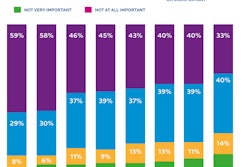The 2015 retail sales year is predicted to close with a 14 percent increase in U.S. sales ($347 billion total) and the holiday season (Q4) is expected to comprise nearly a third of all transactions. However, in this dog-eat-dog world, the onus of protection is placed on retailers to shield themselves and their customers from e-commerce fraud. For the past few holiday retail seasons, even big retailers weren’t immune to hacks, fraud and data breaches. This leads to headlines that instill valid fear in consumers and retailers alike. According to SoandSo, attempted fraudulent transactions increased 61 percent year over year last year.
When it comes to fighting online fraud, retailers must balance intentional friction to gather enough evidence to trust a consumer’s identity with making it convenient enough to avoid cart abandonment. It is all about time vs. money and keeping the consumer experience sufficiently free of hassle. With the increase in online shopping, there is an increased need to be aware of fraud opportunities. On average, merchants manually review 27 percent of orders that are flagged as suspicious, each order taking 6 minutes to review. In the U.S. alone, 800,000 temporary agents will be hired in Q4 to help retailers keep customer service levels high and verify these risky transactions.
If you have not yet deployed a fraud platform and read this far in this article, it is likely you need one. It is the very basic building block of automatic transaction review for medium-sized and growing retailers that want to achieve scale online.
If fraud and chargebacks are reaching a level that is concerning management, you have to decide if you’re going to buy a fraud platform, build one or completely outsource your order review. All are good options and, depending on the complexity of your business and the types of products you sell, the answer varies from merchant to merchant. If you have the development resources and the ability to provide ongoing support to a fraud tool, then you can consider a solution that you utilize in house. However, for most merchants, in order to really focus on their core business, outsourcing fraud efforts makes the most sense. Within the outsourced and in-house options, there are a variety of options to consider, but the primary importance is on whether you are looking for a consultative model that requires rules to be updated and maintained, or a machine-learning option that learns on its own from the experience of working with your business.
Either way, if you are a merchant who does not yet have a fraud protection plan in place for this holiday season, the bad news is that you are behind the curve, as most of the e-commerce industry solidifies its fraud-fighting tools during the month of October. The good news is that it is not too late to still blow last year’s revenue goals and customer service benchmarks out of the water!
Just follow these simple ABCs, specifically for procrastinating merchants, of e-commerce fraud:
- Automate. It is never too late to automate your order review process. You can integrate and access identity data your business needs to be successful within your existing workflow and/or platform. This can help you identify good orders more quickly and speed them to clear, while spending more time on troublesome orders in the process of deciding whether to reject them.
- Best identity. Use the best identity data in the industry, including mobile phone and email information, to be confident and accurate in your decisions to clear orders or flag potential problems. Use real-time data so you have the latest information in today’s world of constant change.
- Clear, clear, clear. Keep your good customers happy with frictionless fulfillment to keep orders flowing. Today’s customers don’t wait for their purchases. Confidence in your order clearing means more money flowing. Add friction to those orders that seem suspicious. Make them earn your trust before you approve their transactions.
The unprecedented number of data breaches in the U.S. in the past year alone exposed tens of millions of people’s personally identifiable information (PII) to fraudsters. Couple this with skyrocketing mobile commerce adoption—infamously under-secured—and Europay, MasterCard and Visa (EMV) implementation (which shores up physical retail outlets, but pushes fraud online), and we have a recipe for potential disaster. Therefore, online merchants must recognize this confluence of forces eroding their bottom line and reducing consumer trust at a time of the year when we want them to be shopping online with joyful abandon.














